What's New
Displaying results 4141 - 4150 of 4924
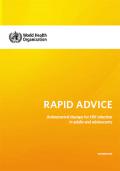
Resource | Guidelines,
The guideline Antiretroviral therapy for hiv infection in adults and adolescents, developed by World Health Organization (WHO), was first published in 2002, simplified in 2003 and was updated in 2006. The guideline continues to follow the principles of a public health approach, aiming to optimize outcomes, including the quality of life and survival, of people living with HIV (PLHIV), and to act as a reference tool for countries to adopt and adapt according to their national circumstances.
During 2009, WHO has worked to update the guideline through a series of coordinated efforts to review and synthesize emerging evidence on when to initiate antiretroviral therapy (ART), what drug regimens to use, and the management of co-infections and treatment failure. This evidence has been assembled following systematic reviews, GRADE* profile preparation and analysis, consultations with PLHIV, cost and economic impact studies, country-level feasibility assessment, and comparisons of current country guidelines.
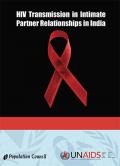
Resource | Publications,
By reviewing available data and literature on HIV transmission in intimate partner relationships; understanding the current national response for addressing this emerging epidemic trend; the endeavour was identifying potential programmatic entry-points for preventing HIV transmission in intimate partner relationships.
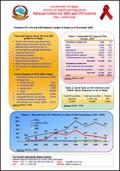
Resource | Fact Sheets,
Facts and Figures about HIV and AIDS Epidemic in Nepal:
- The first HIV infection was detected in 1988 in Nepal. Since then HIV and AIDS epidemic has evolved from low‐ to concentrated among High Risk Groups:
* Injecting Drug Users,
* Female Sex workers,
* Men having Sex with Men and
* Seasonal labour Migrants.
-Heterosexual transmission is dominant.
-HIV prevalence in general population is <1%

Resource | Publications,
This paper summarises the common issues and challenges for health information systems in Pacific island countries and territories. Pacific participants of two meetings hosted by the Health Information Systems Knowledge Hub in 2009 identified these issues and suggested future actions.
These two key events were held in the Pacific region in 2009: a meeting of the Pacific Health Information Network (PHIN) in September in Nadi and a Pacific Health Information Systems Development Forum in November in Brisbane. Both events were designed to create greater knowledge about what is happening within the region, and provide forums to discuss common issues and challenges and learn from relevant local advances.
The global agenda and drivers of health information systems were discussed at both meetings to provide a clearer understanding of how Pacific island countries are positioned within the larger international agenda.
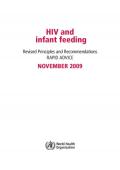
Resource | Guidelines,
WHO recommendations on infant feeding and HIV were last revised in 2006 (published in 2007 as an HIV and Infant Feeding Update – ISBN 978 92 4 159596 41). Significant programmatic experience and research evidence regarding HIV and infant feeding have accumulated since then. In particular, evidence has been reported that antiretroviral (ARV) interventions to either the HIV-infected mother or HIV-exposed infant can significantly reduce the risk of postnatal transmission of HIV through breastfeeding. This has major implications for how women living with HIV might choose to feed their infants, and how health workers should counsel mothers when making these choices. The potential of ARVs to reduce HIV transmission throughout the period of breastfeeding also highlights the need for guidance on how child health services should communicate information about ARVs to prevent transmission through breastfeeding, and the implications for feeding of HIV exposed infants through the first two years of life.
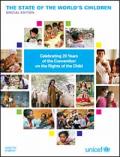
Resource | Publications,
On 20 November 2009, the global community celebrates the 20th anniversary of the adoption by the United Nations General Assembly of the Convention on the Rights of the Child. This unique document outlines universal standards for the care, treatment and protection of all individuals below age 18. It is the most widely endorsed human rights treaty in history, currently ratified by 193 States parties.
During the past two decades, the Convention has transformed the way children are viewed and treated throughout the world. It has exerted a pervasive and profound influence on national and international legislation, policy and programmes, public and private institutions, families, communities and individuals. And it has supported marked advances in survival, development, protection and participation across the world.

Resource | Publications,
Faced with a rising HIV epidemic among injecting drug users, harm reduction policies and programs were introduced in Malaysia in 2005. The positive impact seen since the introduction of these programs comprise the inclusion of the health aspects of illicit drug use in the country’s drug policies; better access to antiretroviral therapy for injecting drug users who are HIV infected; reduction in HIV-risk behavior; and greater social benefits, including increased employment. Despite these achievements, tension between law enforcement and public health persists, as harm reduction exists alongside an overall drug policy that is based on abstinence and zero tolerance. Unless there is harmonization of this policy, sustainability and scale-up of harm reduction programs will remain a challenge.

Resource | Publications,
The objective of this documentation note is to describe the current status of the health information system and its activities across the Vanuatu health sector. It is expected that the outcome of this will provide a strategic overview and preliminary diagnostics for use in determining areas requiring improvement and allow planning for future health information system activities.
After a brief description of the Vanuatu context, the six components of the Health Metrics Network Framework and Standards for Country Health Information Systems (WHO 2008a) are used to describe the present state and potential of the Vanuatu health information system. To inform this analysis, a review of existing forms and databases was undertaken, as well as a number of consultations held with key stakeholders.

Resource | Presentations,
Modes of Transmission in the Philippines
Stakeholders’ meeting
Manila, Philippines
November 27, 2009
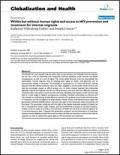
Resource | Publications,
Worldwide, far more people migrate within than across borders, and although internal migrants do not risk a loss of citizenship, they frequently confront significant social, financial and health consequences, as well as a loss of rights. The recent global financial crisis has exacerbated the vulnerability internal migrants face in realizing their rights to health care generally and to antiretroviral therapy in particular. For example, in countries such as China and Russia, internal migrants who lack official residence status are often ineligible to receive public health services and may be increasingly unable to afford private care. In India, internal migrants face substantial logistical, cultural and linguistic barriers to HIV prevention and care, and have difficulty accessing treatment when returning to poorly served rural areas.
Resulting interruptions in HIV services may lead to a wide range of negative consequences, including: individual vulnerability to infection and risk of death; an undermining of state efforts to curb the HIV epidemic and provide universal access to treatment; and the emergence of drug-resistant disease strains. International human rights law guarantees individuals lawfully within a territory the right to free movement within the borders of that state. This guarantee, combined with the right to the highest attainable standard of health set out in international human rights treaties, and the fundamental principle of non-discrimination, creates a duty on states to provide a core minimum of health care services to internal migrants on a non-discriminatory basis. Targeted HIV prevention programs and the elimination of restrictive residence-based eligibility criteria for access to health services are necessary to ensure that internal migrants are able to realize their equal rights to HIV prevention and treatment.





